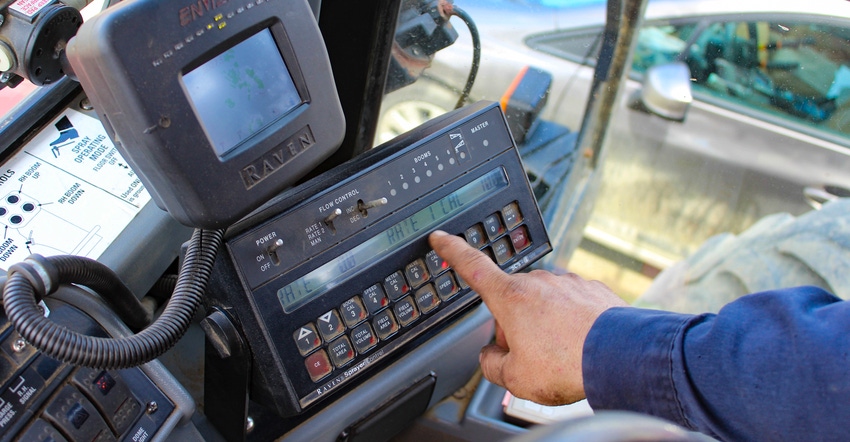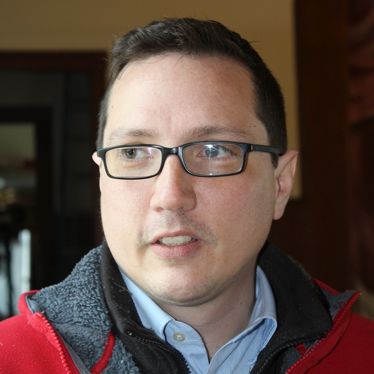May 16, 2019

Giving farmers the ability to precisely measure crop components and variability, and to design site-specific management, can ideally bring higher yields, lower overall costs and make it easier to comply with regulations.
USDA recently reported that farmers could see at least $47 billion in economic benefits each year from using precision agriculture technology.
But the initial expense can be a drawback for smaller farmers, and in some states the lack of cell service and fast internet can prevent some farmers from taking full advantage.
Farmers also must learn how to use it, too, and that can take time.
“Most of these technologies require changing how jobs are executed, or at least require a different set of skills and experience,” says Jack van Almelo of Agricultural Consulting Services in Ithaca, N.Y. “That is a problem in the time-crunch situations through the growing season where every half-day delay can lead to a predictable decrease in yield or quality.”
While custom operators, who can spread the cost of these technologies over more acreage, are more likely to use precision ag, lots of farmers are also interested in the technology. Even if they don’t buy the expensive equipment they use the concepts of collecting, analyzing and documenting data to improve crop production and meet legal requirements.
At a workshop on precision agriculture, sponsored by the Orleans County Conservation District in Vermont, Steve Daigneault of Harvest Equipment talked about some of the newest technology being used on farms now and coming down the pike.
Farmers can increasingly record what’s happening with their crops in real time, starting with mapping each field. John Deere’s most recent GPS receiver, the Starfire 6000, is accurate down to 1.5 inches.
Sensors mounted on tractors or implements, such as forage harvesters, can measure moisture and nutrient constituents such as dry matter, NDF and ADF as the crop is harvested.
With near infrared technology, dry matter content and nutrients in liquid manure can be measured and documented during application. Besides its usefulness to producers, this data can be sent directly to regulators.
Troubleshooting and repairing are easier than ever, although it’s concentrated more in the hands of the equipment manufacturer.
“The old days of going to the farm and trying to guess to figure out what’s going on is over,” Daigneault said. “Today, a lot of it is software. Ninety-percent of calls for service are done with a laptop.”
Someday very soon you’ll be able to switch corn varieties right in your tractor cab. You’ll also be able to monitor your self-driving tractor, or even watch your forage harvester, from the office. You’ll watch as sensors monitor forage loading and fill trucks evenly, minimizing loss.
The right setup
It’s important to set up your system correctly, from the start, because you’ll be transferring a lot of data between devices, computers and software, says Tom Eaton, agronomy consultant with Agricultural Consulting Services. There’s not much time for tweaking when the season begins.
After mapping fields, soil samples are overlaid on field maps. Even soil sampling is moving on from traditional hand coring. A new automated soil sampler can collect as many as 40 samples a minute.
“We all have to be better about getting an accurate composite sample that gives you the ability to create sub-field zones for variable-rate seeding or fertilizer and manure application,” Eaton says.
Because yields should drive nutrient management and other production decisions, farmers easing into precision ag equipment may want to start with yield monitoring. George St. Onge, a custom operator in Newport, Vt., has used a 12-row corn precision planter for three years.
“We’re utilizing every inch of soil better than we used to so, hopefully, we’re getting a better crop out of the field. But customers need to do more yield monitoring,” St. Onge says.
When it comes to corn planting, lots of factors can affect yield, including inaccurate spacing, problems with singulation or delayed emergence due to inaccurate downforce. Now, new seed firmers with sensors can constantly sense changes in soil firmness and will provide hydraulic downforce and ground contact so seeds are planted at optimum depth. Eaton says you can lose 1.5 bushels of corn with every percentage point decline in ground contact.
“A precision planter will cost you some money, but the payback is good,” he says.
Regulatory lag?
Precision agriculture will help with regulatory compliance, but only if government regulators catch up with the technology. For example, today’s nutrient management plans typically permit a maximum amount of manure to be applied to a field. Variable-rate applications on sub-field zones that exceed that amount could be illegal.
“If you’re using precision ag and you’re going above the rate that’s in the plan, you’re out of compliance. We need a little more realism and flexibility in using precision ag,” says Matthew Kittredge, technical service provider with Farm Compliance Service.
 KEEPING UP WITH TECH: While precision ag can help with regulatory compliance, Matthew Kittredge, technical service provider with Farm Compliance Service, says farmers need more flexibility in using the technology, especially with variable-rate applications.
KEEPING UP WITH TECH: While precision ag can help with regulatory compliance, Matthew Kittredge, technical service provider with Farm Compliance Service, says farmers need more flexibility in using the technology, especially with variable-rate applications.

Nutrient plans are usually based on historical data. By using real-time information and better data, manure rates could be pushed without environmental harm, said Scott Potter of Dairy Support Service, a custom operation service in Truxton, N.Y.
“The real question out there is will regulatory agencies allow us to tailor nutrients on-the-go?” he says. “In general, we’re limited in manure that doesn’t necessarily meet crop needs. If we can utilize manure better, there’s definitely environmental and economic benefit there.”
Harlow writes from Vermont.
About the Author(s)
You May Also Like




